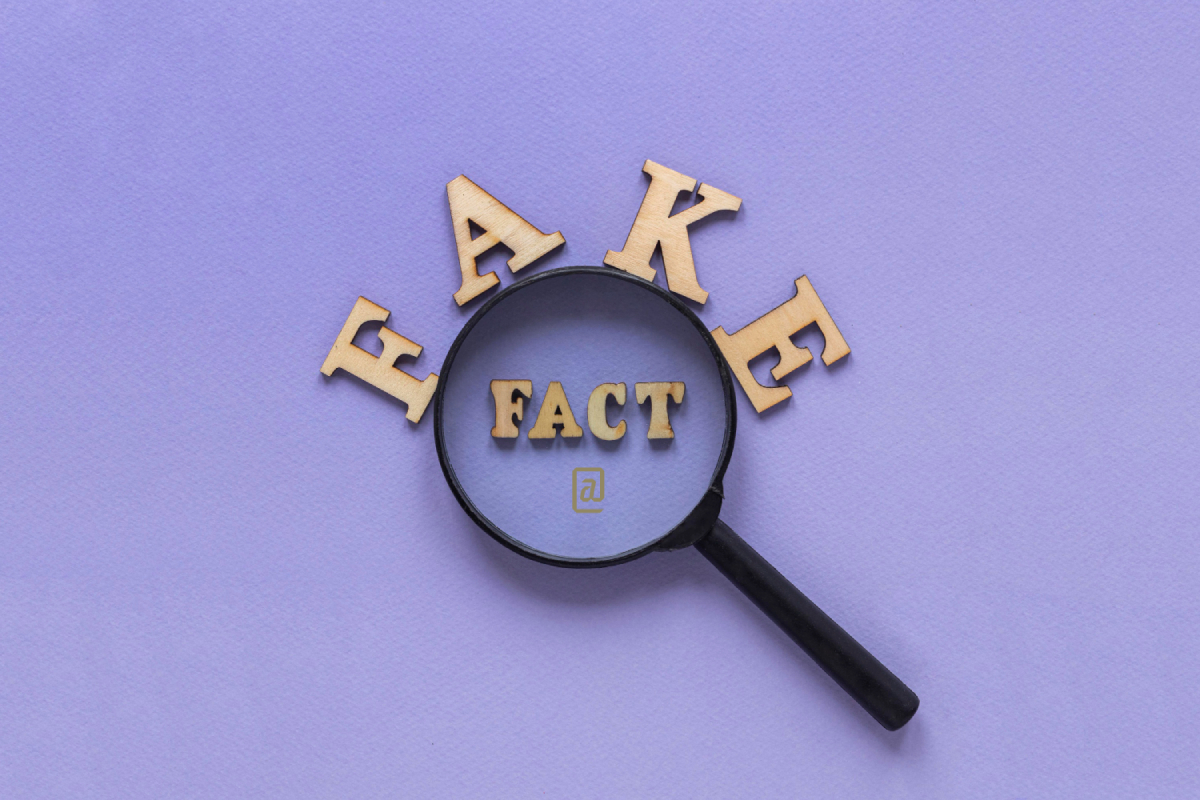
You know how bulls get angry when they see a red cape and charge? Turns out, it’s not the color that sets them off at all. It’s the cape’s movement that does the trick. Bulls, like other cattle, are actually color-blind to red! Myths and misconceptions like these plague just about everything, but they’re particularly prevalent in fields where people feel like they have a grasp on the subject. Email marketing myths definitely fit the bill in this regard.
This field has been around since the birth of the internet, and like any long-standing technology, it’s accrued its fair share of myths and misconceptions. Some of these dubious assertions might have had their roots in reality at one point, but technology and processes evolve, leaving their myths behind (though not always erased). Others, however, are just plain hogwash, nothing more than fanciful stories spun out of vague understandings.
Either way, these myths have got to go because believing in them could be seriously limiting the success of your email marketing efforts. That’s why we’re here to set the record straight and take down some of the biggest misconceptions about email marketing once and for all. So, let’s get to it. Here are five email marketing myths you should stop believing right now.
Myth #1: Email marketing is DEAD
Many online marketing experts have been predicting the death of email marketing for years… and yet it’s still here. Email marketing is ever-growing and highly adapting to new technologies and trends. This claim can be supported by the simple fact that the same fundamental features, such as personalized messaging, segmentation, message templates, and message broadcasting, are being adopted by other messaging channels. That should tell you something about its staying power!
Email marketing’s reign of digital dominance may have been challenged by the rise of social media and messaging apps, but that doesn’t mean this powerhouse channel has been shuffled off to the sidelines. In fact, email still boasts some of the highest ROI in digital marketing, with companies seeing an average of $36 for every dollar spent.
It’s true that consumers may have become desensitized to traditional email marketing tactics due to the sheer barrage of emails that await them in their inboxes daily. However, you shouldn’t take this as a sign to scrap email altogether. All this means is that you need to be more strategic in how you use email. It’s not the channel that’s dead, it’s the tactics you might be using.
Vitality lies in strategy
More than half of Gen Zers and over a third of millennials actually prefer to hear from brands via email as long as it’s done in a thoughtful and engaging way. Constantly putting sales and promotions in front of them won’t cut it; you must focus on delivering valuable content that educates, entertains, and informs them.
And email marketing makes it easier than ever to deliver this kind of content. Unlike social media channels, where you’re at the mercy of the algorithm overlords and constantly chasing the latest trends, emails belong to you. You have complete control over your messages’ content, design, and delivery. You can learn more about email marketing for millennials here and communication that speaks to Gen Z by exploring this article here.
So, if you’re one of those who have written off email marketing as dead, think again! With the right strategy, you can breathe new life into this powerful channel and make it work for you.
Myth #2: Unsubscribes Are Bad News
Many email marketers tremble at the thought of someone unsubscribing from their list. After all, watching your carefully crafted campaigns met with a swift click of the “unsubscribe” button isn’t exactly the most pleasant experience.
But unsubscribes aren’t necessarily bad news (unless their number is disproportionately high, of course). In fact, they can be a blessing in disguise. Discover the reasons for this below.

Improving reputation through increased deliverability
When your emails go unopened and unengaged with, it sends a signal to email clients that your messages aren’t valuable. And if that happens too often, your emails may end up automatically routed to the dark abyss that is the spam folder.
But it gets worse. If these unengaged subscribers start flagging your emails as spam, you could find yourself in even bigger trouble. Not only will your emails start landing in spam folders, making it harder for you to reach your target audience, but you could also face stringent penalties or even a service suspension from your email provider.
So, while it’s never fun to see someone unsubscribe from your list, it’s better than them staying on and potentially harming your deliverability.
Paring down your list to only contain solid and engaged subscribers
Think about it this way: why would you want to keep people on your list who aren’t interested in what you have to say? It will only serve to bloat your list with unengaged users and dilute your campaign’s effectiveness.
By letting people unsubscribe, you’re maintaining a healthy list filled with subscribers genuinely interested in what you offer, bringing you closer to achieving your email marketing goals. This was the exact idea behind Hubspot’s subscriber purge in 2015.
The folks at Hubspot noticed their engagement metrics weren’t where they wanted them to be and that their deliverability was beginning to suffer. So they decided to take a bold step and sent out re-engagement campaigns to those who had been inactive for some time – asking them whether or not they wished to remain subscribed.
The result? Forty-five percent of their list chose to unsubscribe. That worked out to a whopping 250,000 people! But it was a move that paid off. By getting rid of the dead weight, Hubspot was able to return to its desired level of email performance.
Get valuable feedback
Most people will unsubscribe from your list without offering an explanation as to why. But that doesn’t mean you can’t try and get some insight into their decision. Adding a short survey to your unsubscribe page can help you get the inside scoop on why your contacts are leaving.
Of course, not all of your ex-subscribers will take the time to answer the survey. But the ones that do could give you some invaluable insights into what went wrong, why your message wasn’t resonating with them, and how to improve your email marketing efforts in the future.
Hubspot, for example, during their subscriber purge, used the surveys on their unsubscribe pages to figure out that the main issue behind their engagement woes was the sheer volume of emails they were sending out. They decided to dial back their email frequency to just one email a day and were met with a flood of positive feedback from their readers.
Myth #3: Beware of Trigger Words to Avoid Spam
Words and phrases like “free,” “guarantee,” and “act now!” have gotten a bad rap for supposedly getting emails banished to the spam folder. But contrary to popular belief, these words aren’t always the villain they’ve been made out to be.
The warning about using trigger words stems from earlier times when such terms formed the basis of spam filters. But spam filters today are much more adept at sniffing out the real deal from the riff-raff – and their sleuthing goes way beyond just looking for common spam-like keywords.
Sure, the language you use in your emails matters, but it’s not the be-all and end-all of email deliverability. It all comes down to context. Just like how your manager’s choice of words during your performance review can have a different impact based on their intonation and sentiment, the same applies to email campaigns. How you construct your message and the context in which you convey it will determine whether your message will pass as spam.
Why? Because modern spam filters use intelligent algorithms that detect patterns in your text, analyze context and look at the sender’s reputation. So if you have a reputable sender history and your message isn’t attempting to be deceptive or manipulative, you’re more likely to get past the filters unscathed even if you use the so-called “trigger words.” But if you have a questionable sender history and your email’s context is off, even the most innocuous language may not be able to save you.
Myth #4: Videos Enhance Engagement in Email Marketing
On the surface, directly embedding videos into emails seems like a great way to boost your engagement rates. After all, the very nature of a video encourages people to watch and engage with the content – perfect for spicing up an email campaign! But before you pull the trigger on inserting videos, there are a few things to consider.
The main issue with embedded video is that it can affect your deliverability. If the file is too big, it could push your email size over the allowed limit or mess up the formatting of your email and make it more difficult for email programs to accurately parse your content. This can cause your message to get caught in a spam filter or, worse, not make it into their inboxes at all. Also, many email clients still don’t support adding an embedded video directly to an email.

But the good news is you don’t have to completely abandon your video production aspirations. There are several ways that you can add video to your email without embedding it. Here’s a look at some options:
Opt for an animated GIF
Animated GIFs are a great way to bring life to your emails without devouring too much space. They can seamlessly function as a lead-in to the full video or stand alone as an interesting snippet that will pique your readers’ curiosity.
Using GIFs in email marketing can also effectively demonstrate how a product works or what the user will see after clicking on a link. Dell, for example, used an animated GIF in an email to showcase one of its laptops and saw a 109% increase in revenue from this GIF, according to a MarketingSherpa case study. But be careful not to go overboard – too many GIFs can be overwhelming and take away from the overall message.
Give QR codes a try
Another way to add video to your email is by using QR codes. These pixelated codes can be linked to a specific URL and redirect users to the link when scanned by a smartphone. This approach is especially beneficial for users who check their emails on their laptops or desktop computers. Mobile users can also scan the QR code, but they might have to do the extra step of screenshotting the code and then scanning it using Google Lens or another similar app.
The best part about QR codes is that you can easily customize them to match the rest of your email design. Plus, these same codes can also be used to track scan activity, providing you with valuable data to measure the success of campaigns. Just make sure to thoroughly vet the QR code generator you use to create your codes to ensure they are properly encrypted and secure.
Include an image with a play button
Using a still image of your video with an overlay of a play button is a great way to give your viewers the feeling of clicking on an embedded video without actually embedding it. Instead, you can link the play button to the video so that when someone clicks on it, they are redirected to a website or social media page to view it.
This technique is a great way to add a touch of interactivity and visual appeal to your emails without risking deliverability. It also helps to ensure that your formatting remains intact, regardless of device or email provider.
Myth #5: Email Marketing Takes A Lot of Time
When you’re a small business owner or operating with a small team, your time is precious. You have to be mindful of how you use it and determine ways to maximize every minute you spend on tasks.
So considering the resources you have available, manually sending emails won’t likely be the most efficient way to run your email campaigns. Sure, you could go the bulk email route, but that also comes with inherent risks and could hurt your sender’s reputation if there’s even an inkling of spammy content or behavior. This conundrum makes many small businesses think email marketing is too time-consuming.
But don’t let the fear of time-consuming processes keep you from using email marketing as a powerful tool to nurture and engage your contacts. Nowadays, there’s an abundance of tools, services, and strategies to help you streamline your email workflow and boost the impact of your campaigns without sacrificing too much of your time. The following are some tips to start you off.
Automate your emails
Setting up automated emails is a great way to save time and still deliver personalized, timely messages to your verified contacts. With a carefully chosen email automation platform, you can set up triggers and workflows that will automatically send out emails to those who’ve taken a specific action, such as signing up for your newsletter or downloading an ebook.
Have a proper file management system
A disorganized file system can quickly become overwhelming and take longer than necessary as you search for the right asset. To save yourself from wasting precious minutes, set up a proper filing structure that is easy to navigate and makes it easy to access specific files and folders. That way, you can easily find the assets you need to create marketing emails without sifting through multiple folders.
Utilize templates
Thanks to the wonders of the internet, there’s a whole smorgasbord of templates out there just waiting for you to customize. Whether you’re looking to start a blog, create product pages, or design newsletters and email campaigns, templates will give you the perfect framework to start any project. Plus, they save you from starting from scratch and will make all your emails look polished and professional without spending hours on design. Just make sure to adjust and customize it to fit your brand’s style and message.

Discover the Truth About Email Marketing
It’s easy for people to get caught up in the fog of myths and speculation that shrouds our understanding of the ever-evolving email marketing world. To get the most out of your email marketing, however, you must be willing to cut through the haze and embrace reality.
Now that we’ve busted some of the most widely-circulated myths, you should have a clearer picture of how email marketing works and how best to leverage it for your business. So, go ahead and put these insights to good use, and watch as your email marketing efforts take flight!
About the Author
 Sam Klaas is a marketing expert and content creator with years of experience helping startups achieve their growth goals through compelling content. With a background in B2B SAAS and product marketing, Sam combines his deep knowledge of marketing trends with his love of language to craft stories that resonate with audiences and drive action.
Sam Klaas is a marketing expert and content creator with years of experience helping startups achieve their growth goals through compelling content. With a background in B2B SAAS and product marketing, Sam combines his deep knowledge of marketing trends with his love of language to craft stories that resonate with audiences and drive action.